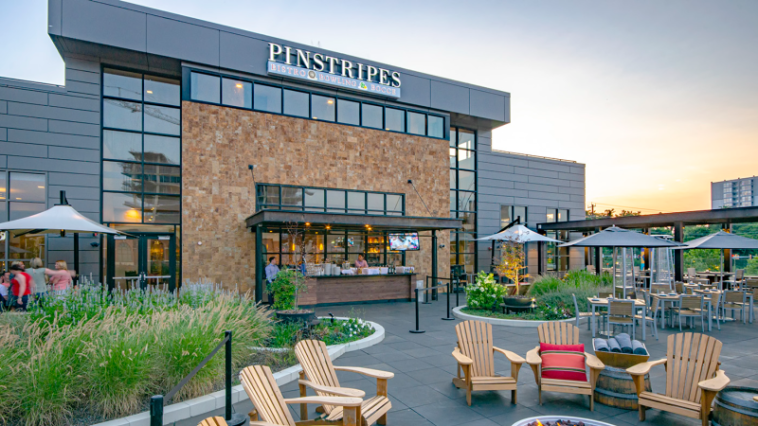Pinstripes, the Italian-American chain that mixed bowling, bocce, and sit-down dining, has filed for Chapter 11 bankruptcy after closing more than half its locations.
The company entered court protection in Delaware on Sept. 8 with about $143 million in debt and liabilities that could reach $500 million. At its height, Pinstripes ran 18 restaurants. Just eight are still open.
The concept, built around made-from-scratch Italian food alongside bocce courts and bowling lanes, was positioned as an alternative to arcade-driven rivals like Dave & Buster’s and Chuck E. Cheese. But rising costs and thinning traffic left the company short on cash, forcing store closures and ultimately the bankruptcy filing.
Pinstripes plans to sell its assets to its lender, Silverview, under a prearranged deal. The bid is valued at roughly $16.6 million, made up of a $15 million credit bid and $1.6 million in cash, with Silverview also taking on certain liabilities. The firm has agreed to provide $3.8 million in financing to keep the business operating during the case.
“This proposed timeline ensures sufficient time to effectuate a value-maximizing transaction while avoiding the value destruction of a free-fall chapter 7,” Chief restructuring officer James Katchadurian said in a filing.
The eight restaurants that remain open are in Illinois, Maryland, Minnesota, Ohio, Washington, D.C., and California. Court filings suggest Punch Bowl Social may also enter the bidding process, though Silverview is currently in position to take over unless a higher offer emerges.
Before the filing, investment firm William Blair had highlighted Pinstripes’ diversified revenue streams, noting that nearly half its sales came from private events — two-thirds of them corporate gatherings. Games like bowling and bocce contributed another 21% of sales. But that mix wasn’t enough to offset lower guest traffic, even as the chain raised menu prices and sought to cut costs.
The bankruptcy now leaves Pinstripes hoping for a sale that keeps its eight surviving locations alive, while the broader eatertainment sector faces the same pressure from consumers who are eating out less and spending cautiously.

